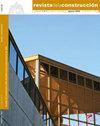吸水聚合物球作为混凝土内水固化剂,支持水化反应
IF 1.4
4区 工程技术
引用次数: 0
摘要
聚合物球在混合混凝土配料的初始阶段加入时,可以向砂浆或混凝土混合物供水。它作为内部水源供给混凝土水化过程中吸收的水。吸水聚合物(WAP)可以吸收高达自身重量数百倍的水。利用这一思想,配制了加WAP和不加WAP的混凝土混合料,并分别进行了空气养护和水养护。在本工程中,WAP以水泥重量的2.5%和5%两种不同比例加入,硬化混凝土承受压缩荷载。并与水固化对照混凝土(无WAP混凝土)进行了力学强度和体积变化的比较。结果表明,当WAP球添加量为2.5%和5%时,风干试样的强度分别为30.37 MPa和28.74 MPa。强度分别为水固化对照试件强度的99%和94.2%。结果还表明,试样在空气中表现为膨胀,而试样在水中表现为收缩。实验结果还表明,在84天的时间里,与水固化的普通混凝土混合料相比,空气固化的WAP球混凝土试件的强度有了显著的提高。本文章由计算机程序翻译,如有差异,请以英文原文为准。
Water absorbing polymer balls as internal water curing agent in concrete to support hydration reaction
polymer balls can supply water to the mortar or concrete mixture when added during the initial stage of mixing the concrete ingredients. It supplies the absorbed water during the hydration process of concrete as an internal water source. Water Absorption polymers (WAP) can absorb water up to hundred times of their own weight. Using this idea, the concrete mixture has been prepared with WAP and without WAP (Control) and subjected to air curing and water curing respectively. In this work WAP has been added in two different percentages i.e., 2.5% and 5% of the weight of cement, and the hardened concrete has been subjected to compression load. The mechanical strength and the volumetric change of these mixes were compared with the water cured control mix (Concrete without WAP). From the result, it was concluded that the air-cured specimen showed strength of 30.37 MPa and 28.74 MPa for 2.5% and 5% of addition of WAP balls respectively. This strength is about 99% and 94.2% of the strength of control water-cured specimen. Results also showed that specimens in air behave for expansion while samples in the water acted for shrinkage. Experiment results also showed that air-cured concrete specimens with WAP balls show significant strength gain over a period of 84 days compared to water-cured normal concrete mix samples.
求助全文
通过发布文献求助,成功后即可免费获取论文全文。
去求助
来源期刊

Revista de la Construccion
工程技术-工程:土木
CiteScore
2.30
自引率
21.40%
发文量
0
期刊介绍:
The Journal of Construction is aimed at professionals, constructors, academics, researchers, companies, architects, engineers, and anyone who wishes to expand and update their knowledge about construction. We therefore invite all researchers, academics, and professionals to send their contributions for assessment and possible publication in this journal. The publications are free of publication charges.
OBJECTIVES
The objectives of the Journal of Construction are:
1. To disseminate new knowledge in all areas related to construction (Building, Civil Works, Materials, Business, Education, etc.).
2. To provide professionals in the area with material for discussion to refresh and update their knowledge.
3. To disseminate new applied technologies in construction nationally and internationally.
4. To provide national and foreign academics with an internationally endorsed medium in which to share their knowledge and debate the topics raised.
 求助内容:
求助内容: 应助结果提醒方式:
应助结果提醒方式:


